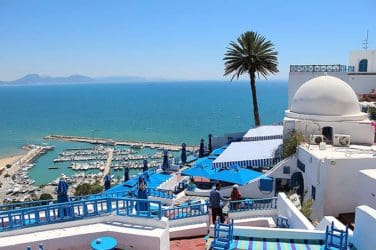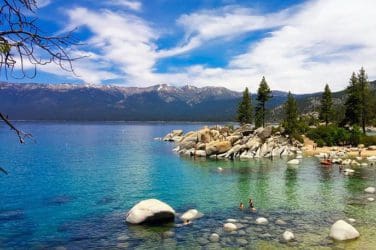Words: Will Squires
I’m standing in Piazza Municipio in Naples. To one side towers the grand Castel Nuovo, an Angevin keep erected in 1279. To the other, a series of tower cranes lift and strain under the weight of heavy concrete sections, lowering them deep into a colossal excavation.
Naples is a city of grand history, and at a simple glance this seems like a coming together of old and new that is being mimicked in the historical cities of Europe, but there is a subtle difference. With the colossal vista of the Bay of Naples spanning the breadth of the horizon, my guide, Giuseppe Guanci quietly informs me that the lumbering construction project to my left (the new Naples Metropolitano subway station) has experienced some surprising delays.
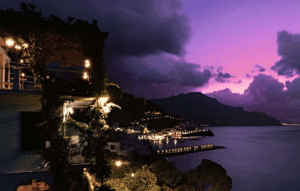
As they dug through the soft crust of the earth, through the subduction zone between geotechnical plates that brought about the infamous explosion of Mount Vesuvius, they came across an ancient Roman boat, indicating an ancient harbour. Archaeologists were summoned, the boat carefully excavated and placed into storage, and the construction began anew…
Until they found another boat, deeper within the earth.
And then another.
The delay to the construction was monumental. But this historical evidence gives you a better introduction than I ever could to the City of Naples, the Amalfi Coast, and its sheer historical richness. People have lived here for centuries, with different civilisations returning to colonise this jutting point of land. It’s easy to understand why.
Naples itself is characterised by a teeming old town, packed with restaurants and street food, grotto bars and buzzing scooters. Pale, pearly balls of mozzarella di bufala adorn the counters of delicatessens. The perpetual buzz of commerce seems to hang in the air – the Neopolitans are not known for being quiet. Across from Castel Nuovo, and that grand naval mausoleum, Giueseppe ushers us into a small, crowded coffee bar, Il Vero bar del Professore, a location famous for creating Café alla Nocciola. Except, Giuseppe lets us know, there are about five impostors scattered around the heart of the town – an example of Italian innovation – preying on the original professor’s good name.
Fuelled by the whipped-hazelnut and espresso hit of the nocciola, we press on through winding streets at a blur. The centre of Naples is pure bustle, and the best thing to do is to fall into the midst of it. Giuseppe darts from place to place, a euro here yielding a golden arancini, a hastily whispered entendre there returning a cuoppo of salmon, wrapped in a saline batter. A gilded sfogliatelle shatters as I bite into it, infinitesimally thin layers of pastry collapsing, redolent of butter. I feel I could spend an age in Naples, perhaps even a short era, but given the madness of the city the world-renowned pizza (apparently the true Neapolitan artists are striving to equalise the balance of flour and water in the dough) and the resounding howl of car sirens, it’s the ocean and the coast that calls strongest.
The Amalfi Coast has experienced something of a popular resurgence in recent years, with pastel-pretty Positano a favourite of Instagrammers everywhere, but it has long been a destination. From the Roman emperor Tiberius, to 18th century European socialites who came here to finish the Grand Tour, people have flocked from afar to gaze from its teetering elevations and to walk amongst the fragrant lemon terraces.
‘In high summer, the roads do not move,’ our driver confides, the engine on his Mercedes growling as we burst around a corner, soaring across a bridge yawning across a tremendous valley. In June and July, tourist buses pack the winding Amalfi Drive, with hordes of people packing out from Sorrento and Salerno to sight-see in Ravello, Positano and Amalfi.
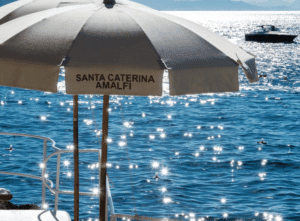
Sorrento itself has a slightly overpopulated feel to it. We’re charged an extortionate fee for a lukewarm beer in the central plaza, yet as you disappear into the back corners and alleyways of the town, there is a hint of old magic. Stroll through the Giardini di Cataldo, a lemon grove surrounded by ochre walls, before taking a tight hairpin onto Piazza Angelina Lauro. Grab a ciabatta stuffed with porchetta and dark, almost purple friarelli at Satiri E Ninfe, a small locals café, before walking two doors up to La Dolce Sorrento for an espresso with a crema as thick as a coin. As the sun cuts towards the horizontal, weave your way down to the water’s edge to catch the dying light at the foot of the towering cliffs Sorrento rests upon, before grabbing the catch of the day on the marina.
We’re here on the cusp of the low season, early October. The last vestiges of the package holiday have fallen away, and the air seems to have breathed a sigh of relief. There is a temptation in a week’s break to stay somewhere and settle. But it’s after the buses leave, and the towns empty out that you see the real beauty of this slice of Italy. Darting out from Sorrento, we take back to the roads, headed for Amalfi itself, and a slice of the regal splendor that has drawn the aristocrats, decreed sources of imperial power and flagrant decadents here for decades.
The Hotel Santa Caterina nestles at the crest of the Amalfi Drive, just where the cliff-face recedes to give you an unfettered view of the historic republic of Amalfi itself. Built in 1880 by the Gamberdella family, the Santa Caterina has slowly spread down the rock-face itself, bedding deeper into bedrock of the Italian coast. Extolled by every possible publication, it has the illustrious award of being the number one rated hotel on the Amalfi Coast at the time of our visit (on not one, but four different websites that purport to be an expert at these things).
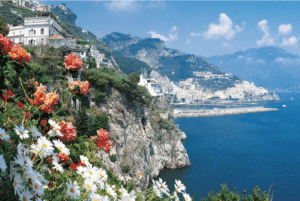
I am something of a hotel-sceptic, but it is almost impossible to find a fault here. ‘For us, it is only by September that the hotel is truly perfect’ smiles Andrew Camera, the hotel’s manager who has spent over twenty years nurturing this pristine, vertically inspired bolthole of decadence. The rooms are delicately appointed – articulate tiling, dark wooden furniture – but the balcony view is truly spectacular. Gazing down the plummeting cliff-face, past tended garden, sculpted pergola, and a glass-elevator ride to secluded private beach and pool, the gentle curve of Amalfi harbour unfolds before you.
The Santa Caterina feels like the sort of hotel James Bond would retire to after a particularly arduous pursuit, safe in his brief plot-armor. Wandering into the lobby, the dulcet sounds of Ludovico Einaudi break through the hazy air, a waiter ushering us in for a cocktail. Nestled in the pool-side restaurant, I carve into a bronzed calzone that explodes with a riotous mixture of ricotta and fior di latte, surrounded by a small bay of bright-red, San Marzano tomato sauce. I don’t want to leave – I fear for unknown gunmen, I fear for cyanide in my martini, but most importantly I fear for no longer being at the Hotel Santa Caterina.
Amalfi itself is treasure of gems both hidden and brazen, and if you choose to splash your hard-earned cash on the Hotel Santa Caterina, be sure to escape the hotel’s cushioned clutches to wander down into the heart of the old town itself. When the tourist-pressure releases, skirt through the back alleys to La Bottega dei Ferrari di Luisa Damasco, and order a sandwich of ricotta, sundried tomato and marble-white colonnata for a cool €5. Walk it out to the breakers, crack a cold can of Peroni, and stare back up the cliff-face at your sheltered balcony. As the sun sets, dart from packed trattoria to sheltered coffee shop, and let yourself sink in to the slower pace of Amalfi at night.
Seeing Positano at its best demands an early rise. A bus delivers you to the tiny mountain hamlet of Agerola, where you can walk down the cliffs across the hallowed walk of the Sentiero Degli Dei – the path of the gods. Pack another one of the colonnata sandwiches, and reach Positano as the sun sets, casting a golden tone over the pastel pinks, blues and greens. The vistas from the top of the coast are simply breath-taking, and as you round the curve of the coast to gaze down into Positano, stop off at Il Chiosco for a lemon granita in a plastic cup, and a bruschetta made with tomatoes picked from the window boxes lining the terrace. Skip the all you can eat buffets with a view. Clamber down to Fornillo beach to eat fresh buffalo mozzarella, and giant prawns grilled on lime leaves at a Da Ferdinando, all washed down with the local falanghina white wine, served in a pitcher with slices of vibrant peach.
Beyond the views and volcanic islands of the coast, Irpinia to the east boasts some of Italy’s most arable land. Known for its hazelnuts, chestnuts, grapes and olives, Tasting Campania (headed by our Neopolitan guide Giuseppe) offers expansive tours of the local land, including bespoke truffle hunting experiences. We stop off at an authentic agriturismo for an authentic lunch cooked exclusively from products grown on the attached farm, before spending a lazy day darting from winery to nougat factory.
Seeing Italy from the country gives us a fresh perspective, and an understanding of the roots that support one of the world’s most renowned food cultures. The attachment to the land, the local obsession with quality, and the sheer bounty leads to an area that has done so and will continue to draw travellers from afar.
There are many things to draw you to this corner of the world. Be it the crisply-ironed splendour of the Santa Caterina, or the unfailingly sharp bite of a lemon gelato from a stand on the side of the road, you will not leave Amalfi without at least one lasting impression. From bustle to bruschetta, the unending olive groves of Irpinia to the secluded gardens of Ravello, why question the wisdom of the ages?
Experience the beauty of the Amalfi coast at the Hotel Santa Catarina with rooms starting at 360€ per night.







